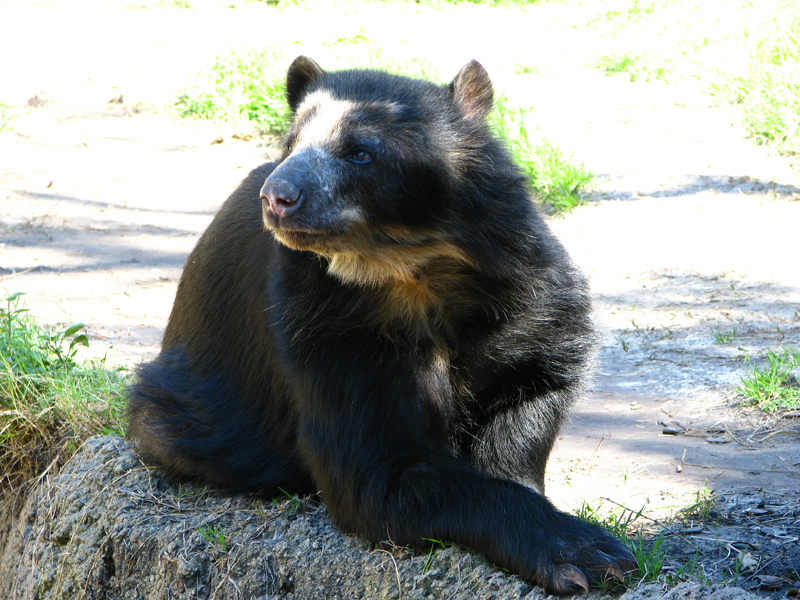Dearest Readers,
At dance class last week, I had an interesting exchange.
It went something like this.
Me: ‘I got this sweater in Peru.’
Guy: ‘Deepest, darkest Peru?’
Me: ‘What?’
Guy: ‘Deepest, darkest Peru. Where Paddington Bear is from.
Me: ……
Guy: ‘Paddington Bear.’
Me: …..
Guy: ‘WHAT?!?!?!’
(Later, after bringing five others into this discussion and determining no other Americans were around to back me up on the lack of cultural exposure of this bear in America.)
Guy: ‘I’m so disappointed in you.’
Me: ‘Take it up with America.’
Okay, so that discussion was full of sarcasm and mock disapproval…that lasted the entire class but never failed to make me laugh. I learned that, apparently, a Paddington Bear movie was released in the States a couple of years ago…I just never heard of it.
Maybe it was big is some areas? I don’t know.
Anyway, it was pretty firmly established that Paddington Bear is a beloved British icon also known a bit in Germany but not so much in Spain and America, so I decided to do something I should be pretty good at by now: research.
I had two research questions in mind, the second of which takes precedent: Who/What actually is Paddington Bear and why is he from deepest, darkest Peru, of all places?
Follow-up question: does he speak Quechua or Spanish, like they do in real-life Peru?
Let’s find out, shall we?
—————————–
Paddington Bear is the creation of Bond…Michael Bond. The first book, A Bear Called Paddington, was published in 1958, and there are over 150 titles related to this Peruvian bear, from the original novels to board books for little ones. There are Paddington books translated to at least 40 languages.
Right now, Paddington’s signature look is a blue raincoat, a red hat, and a beat-up suitcase, but that wasn’t always the case.
According to summaries of the chapters of the first book, Paddington is sent from Peru to London because his Aunt Lucy needs to go into a retirement home, the Home for Retired Bears in Lima.
The summaries make it seem like this little guy causes a lot of lovable trouble, so I can definitely see how he would become a cultural icon really fast.
Paddington’s Peruvian name is Pastuso, but they call him Paddington after the train station they found him in because apparently people can’t pronounce Pastuso. He was originally supposed to be from Africa, but there are no bears there, so he’s from Peru because they have bears…but not Paddington-like bears. They have spectacled bears, males of which weigh 220-440 pounds and when mature aren’t less than five feet tall.
Compare:


But okay, okay, it’s cute, he’s a anthropomorphized bear, he’s from Peru, and he goes on adventures in London. There are now Paddington-based itineraries created in his honor and a Paddington Trail. There are statues of him, and Google made him a Doodle. He also loves marmalade.
But the question I keep wondering is does he speak Spanish or Quechua? His Aunt Lucy taught him to speak English, but that doesn’t explain what language the people around him are speaking.
So…what then?
TV Tropes describes the books as presenting Fridge Logic, which is just another term for internal consistency issues that tend to hit people as they’re staring into their fridge, but not during the movie/book/tv show. Paddington’s internal inconsistency is that he and his community doesn’t speak Spanish or Quechua. This is how TV Tropes puts it:
Paddington doesn’t know Spanish because he speaks a different language from the rest of Peru (let’s call it Darkest Peruvian) which by sheer coincidence is exactly like English, explaining how Paddington and Aunt Lucy are able to converse in English.
This doesn’t mean that Paddington is somehow downgraded, though. Lots of shows have internal consistency problems. It just makes some things easier.
Some Final Thoughts:
- I am still wary of Paddington Bear, mostly because I went to Peru and it will forever bother me that he is really not in any sort of way Peruvian.
- I now want to read all of the novels because I want to be up-to-date with this UK-based phenomenon and also because why not?
- I’m curious how many people in America really and truly know what Paddington Bear is.
Thanks for reading this sorta-long, sorta-rambling post! Remember to share it if you liked it, and please tell me if you know Paddington Bear and how (especially if you’re from the States). I’d never even heard the name before last week, so it blows my mind that Paddington was at some point directed to the entirety of the American public.
Your Bonnie Celtophile,
Dani



